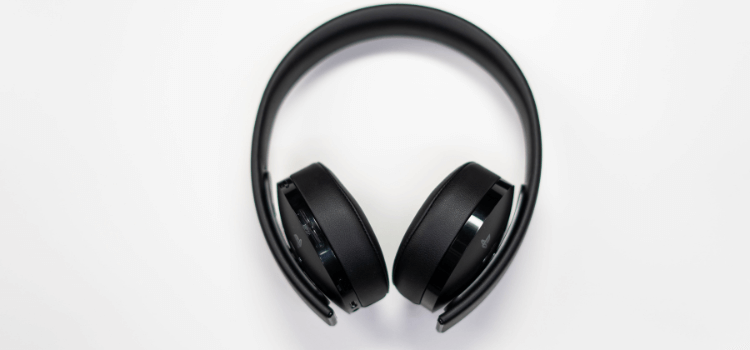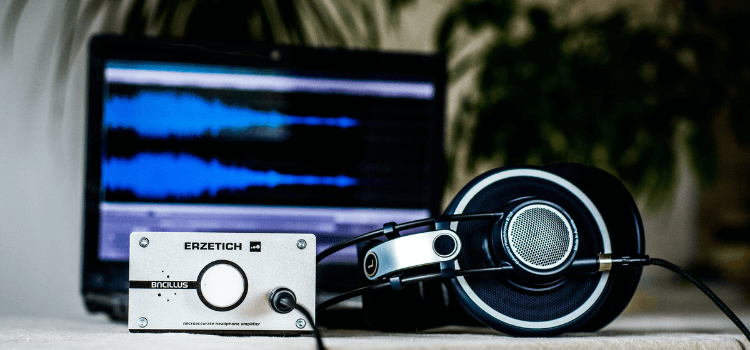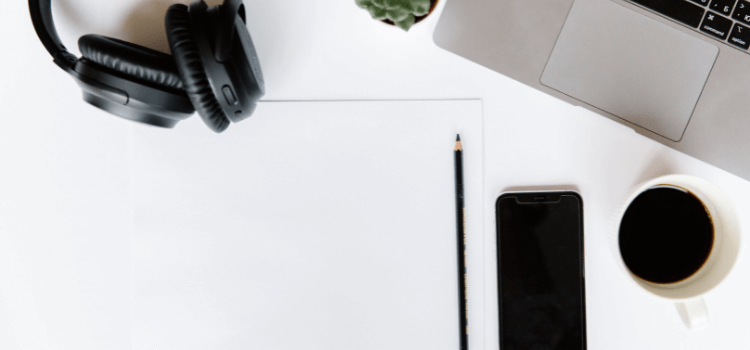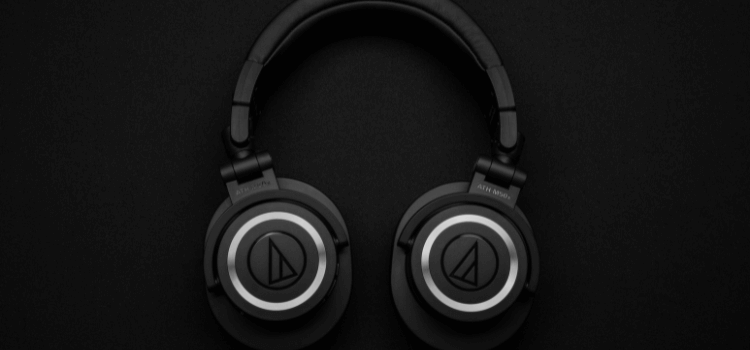As an Amazon Associate I earn from qualifying purchases.
If you’re experiencing the frustrating issue of your headphones constantly disconnecting and reconnecting, there are a few possible reasons for this. One normal cause is a loose or injured headphone jack. Check to see if the jack is securely plugged into the device and if there are any visible signs of damage. Another possibility is interference from other electronic devices or Bluetooth connections. Try moving away from other devices or turning off any unnecessary Bluetooth connections to see if that resolves the issue. Additionally, it could be an issue with the headphones themselves, this as a fault wire or connection. If none of these resolutions work, it may be worth contacting the manufacturer for further support or repute Buying a new pair of headphones.

Why do my Headphones keep disconnecting and reconnecting
In this article, we explore the common reasons why headphones may continuously disconnect and reconnect when connected to a device. We also provide troubleshooting points and resolutions to help you fix this problem and enjoy continuous audio.
Check for Physical Damage or Loose Connections
There could be different causes why your headphones keep disconnecting and reconnecting. It could be due to a loose or damaged connection, a problem with the headphone jack or port, a software issue, or even interference from nearby electronic devices. To troubleshoot this problem, try the next actions:
Check the headphone cable:
Secure the cable is safely connected to both the headphones and the audio instrument. Review the cable for any injury or fraying that could be causing alternate connectivity.
Clean the headphone jack or port:
Dust or ruins in the headphone jack or pier can meddle with the connection. Use a can of narrow air or a tender fabric to gently clean the jack or port.
Test with another device:
Connect your headphones to another audio instrument to check if the case continues. If the problem only occurs with one device, it could be a compatibility issue or a problem with that specific device.
Update your audio drivers:
Olden or repugnant audio drivers can now and then reason connectivity problems. Look at the plant website or use a driver update software to confirm your audio drivers are up to date.
Check for software updates:
Now and then, a software failure or glitch can cause headphone connectivity problems. Confirm your device’s management method and any topical audio software are updated to the latest version.
Reduce interference:
Move away from other electronic devices that may be causing interference, such as Wi-Fi routers, microwave ovens, or cordless phones. Additionally, try using your headphones on another device to see if the topic persists.
If none of these steps solve the problem, it may be obligate to ask for skilled help or consider replacing your headphones.

Ensure Bluetooth is Enabled and Devices are Paired Properly
When troubleshooting Bluetooth connectivity issues, it is important to check that Bluetooth is allowed on your device and that the instrument you are trying to pair is rightly connected. To do this, go to your instrument locations and ensure that Bluetooth is turned on. Additionally, confirm that the instruments you are trying to connect are within extent of each other and that they have been properly paired.
This can usually be done by going to the Bluetooth settings on your device and selecting the device you want to pair with. If the devices are not pairing properly, try resuming both instruments and trying to pair them again. It is also a good idea to check for any software updates for your devices, as these updates can often resolve connectivity issues.
By following these steps and ensuring that Bluetooth is enabled and devices are properly paired, you can maximize the functionality and convenience of your Bluetooth-enabled devices.

Update Headphone Firmware and Device Software
Keeping your headphones and device software up-to-date can be a daunting task. There are so many different models, features, and updates that can make it hard to know how to update your headphones and devices correctly. We’re here to help! In this post, we’ll cover the basics of updating headphone firmware and device software, so you can keep your audio gear running as smoothly as possible. We’ll also discuss some best practices for keeping your headphones and devices up-to-date, so you can get the most out of your audio gear!
Check for firmware updates:
The first step is to check for any firmware updates. This can be done through the device settings or the manufacturer’s website. If there are any updates, download and install them.
Update your device software:
The next step is to update your device software. This can be done through the device settings or the manufacturer’s website. Make sure to check for any updates and download and install them.
Connect your headphones to your device:
Now that you have the latest firmware and device software, it’s time to connect your headphones to your device. This can be done via a USB cable or Bluetooth. Make sure the connection is secure and that there are no disruptions.
Check the settings:
Once your headphones are connected, check the settings. Confirm the audio settings are right and that the sound is good. If the sound is not good, try adjusting the settings until it is.
Enjoy your music:
Now that you have updated your firmware and device software, you can enjoy your music. Make sure to check for any updates regularly so you can keep your headphone firmware and device software up to date.

Reset Headphones and Device Settings
If you are facing a matter now with your headphones or device settings, a simple solution to try is resetting them. Resetting can solve any software glitches or disputes that may cause the problem. If you want to reset your headphones, please refer to the manufacturer’s order or user manual for the specific degree. Generally, this involves turning off the headphones, disconnecting them from any devices, and then holding down a reset button or a combination of buttons for a few seconds.
As for your device settings, you can typically go to the settings menu on your device and select the option to reset or restore default settings. Resetting your device settings will remove any personalized decisions or configurations you have formed, so it’s the best idea to back up any great data or decisions before coming.
Check for Interference or Signal Interruptions
When you are experiencing issues with your signal or interference, it is important to check for any potential interruptions. This can favor confirming that you have a clear and uninterrupted connection. Some common causes of interference include nearby electronic instruments, bodily facer, or even atmosphere situations.
To identify and address any interference, you can start by checking the area around your signal source and device for any devices or objects that could be causing interference. Moving these objects or devices away from your signal source can help improve your signal strength. Additionally, you can also try adjusting the positioning of your device or signal source to avoid any physical obstructions.
Furthermore, it is important to consider any external factors such as weather conditions or nearby construction that could be affecting your signal. In these cases, waiting for the situation to improve or seeking alternative solutions, such as using a different signal source or location, may be necessary. By being proactive and checking for interference or signal interruptions, you can ensure a better and more reliable connection.

Test Headphones with Different Devices
When testing headphones, trying them out with different devices is important. This can give you a better understanding of how the headphones perform and sound across various platforms. By testing them with different devices, such as smartphones, laptops, and audio players, you can get a more accurate representation of the headphone’s capabilities.
Different devices may have different audio settings or capabilities, so testing with multiple devices can help you identify any inconsistencies or issues. Additionally, testing with different devices allows you to experience the headphones in different environments and situations, providing a more comprehensive assessment of their performance.
Contact Customer Support or Seek Professional Help if the Issue Persists
Contact customer support:
If you’re having an issue with a product or service, your first step should be to contact customer support. Many companies have a customer service line or website available to help you with any product or service-related issues.
Seek professional help:
If the issue persists after attempting to contact customer service, it may be time to seek professional help. You can look for local professionals who specialize in the product or service you’re having an issue with. This often helps you to get the problem solved more than fast.
Ask for a refund:
If the issue can’t be resolved, you may be able to ask for a refund. Trusting the company’s insurance, you can do to get a refund for the product or service.
Take legal action:
If you’re still not satisfied with the outcome, you may be able to take legal action. Trusting in the condition, you can do to file a lawsuit against the company.
Write an online review:
If you’re unhappy with a product or service, writing an online review can be a great way to get your point across and warn other customers about your experience.

Conclusion
In conclusion, there could be different thoughts on why your headphones keep disconnecting and reconnecting. It could be due to a loose connection, a problem with the headphone jack, compatibility issues, or even a software glitch. To troubleshoot this issue, you can try cleaning the headphone jack, checking for any loose connections, ensuring that your headphones are compatible with your device, and updating your device’s software. If the issue arises, it may be valuable to contact the manufacturer or seek professional help to resolve the issue.
Amazon and the Amazon logo are trademarks of Amazon.com, Inc, or its affiliates.